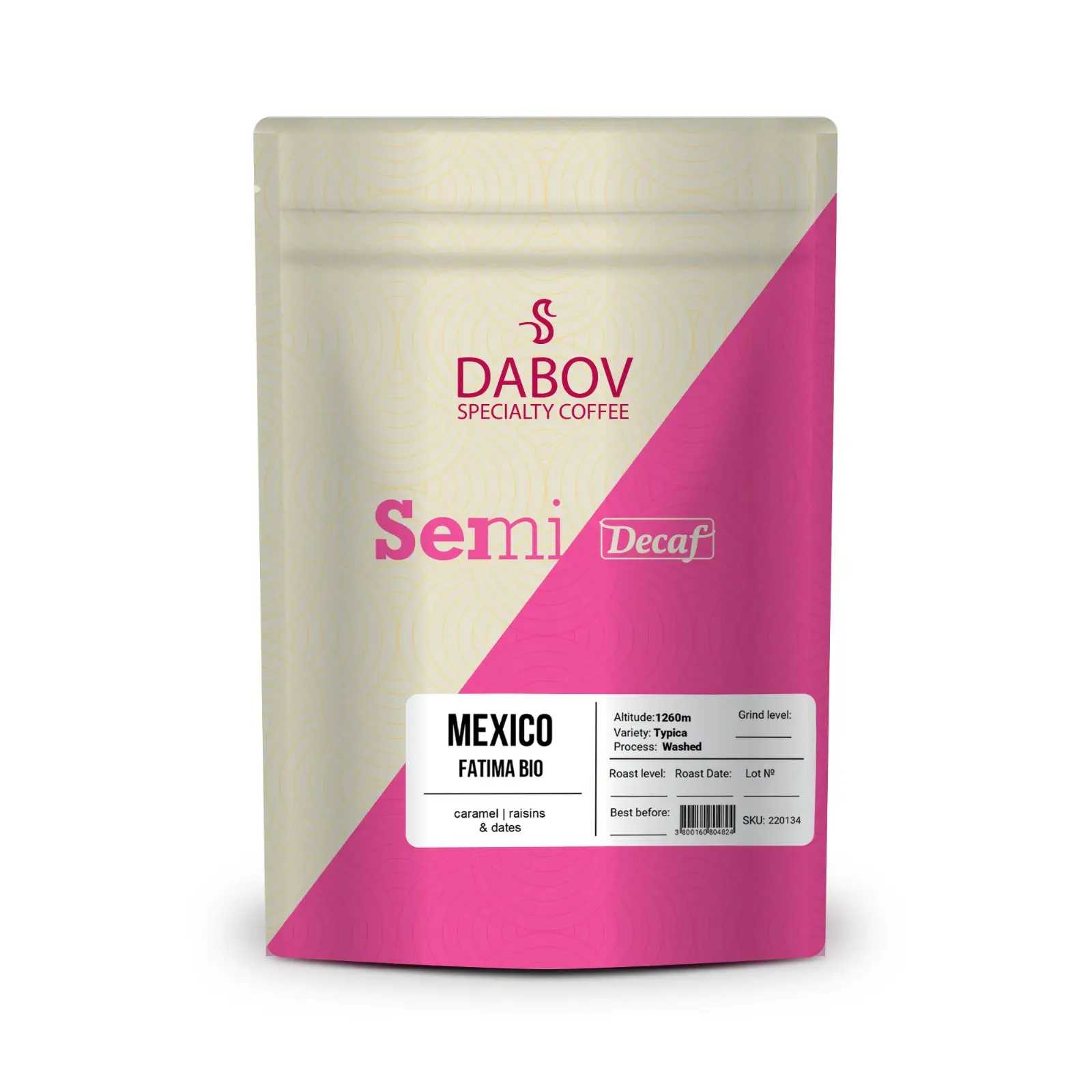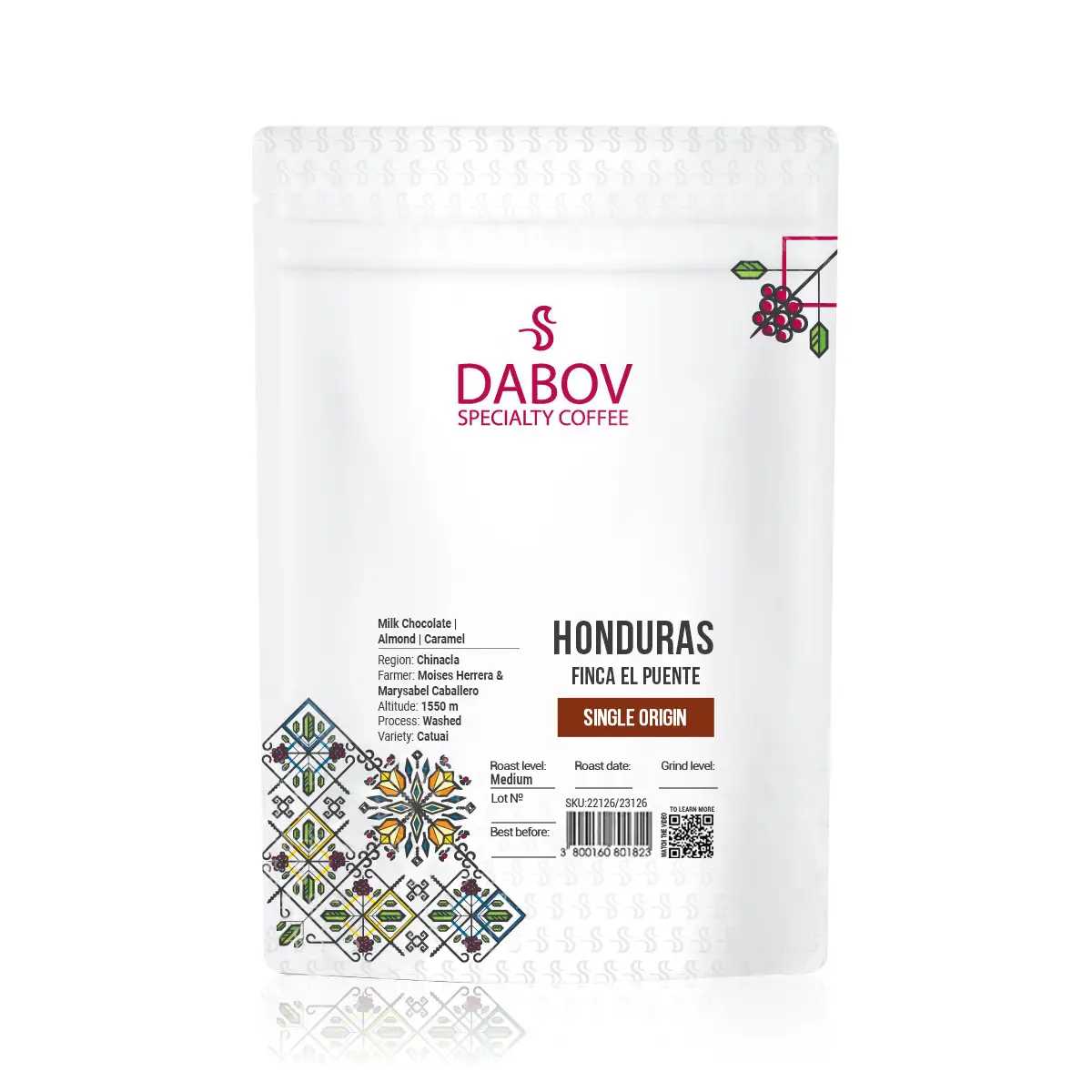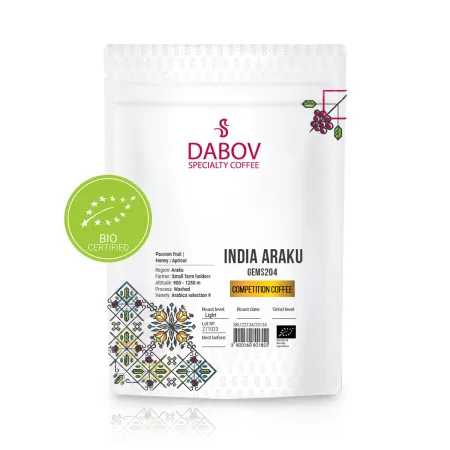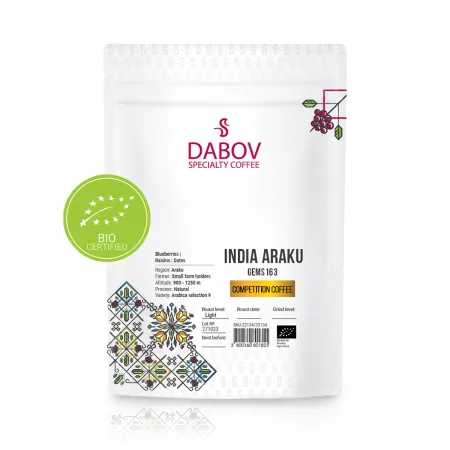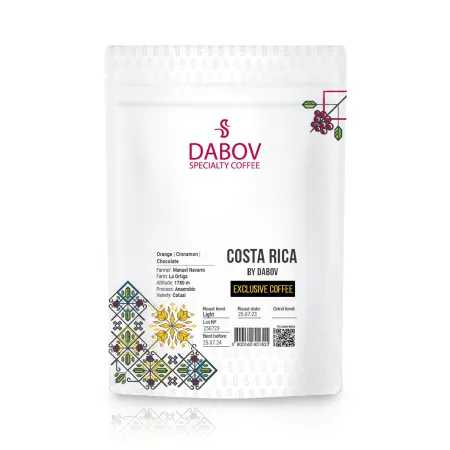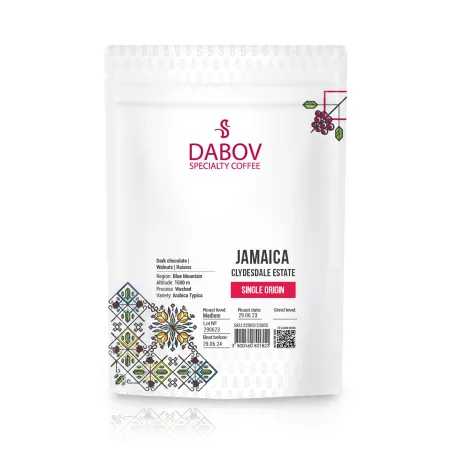Exploring the Natural Process SunDried to Perfection
Dive into the world of sundried coffee – a unique, flavorful experience that reflects the art and science of natural coffee processing. In this guide, we'll explore what makes sundried coffee so special, examining its rich history and natural production methods. Learn how these techniques impact flavor profiles and discover the challenges faced by farmers and producers. The journey of sundried coffee from farm to roastery will reveal the intricate steps taken to ensure quality. This article invites coffee lovers to appreciate the complexity and beauty of the sundried process and encourages exploration of different types and brands of this delightful beverage.
Introduction
In the world of specialty coffee, few methods of processing evoke as much excitement and intrigue as the natural, sun-dried process. This time-honored technique, which allows coffee cherries to dry in the sun with their fruit intact, has been captivating coffee enthusiasts and connoisseurs alike with its unique flavors and aromatic profiles. Sun-dried coffee, also known as natural processed coffee, has gained significant popularity in recent years, not only for its distinctive taste but also for the artisanal approach it represents in coffee production.
The natural sun-dried process is a testament to the intricate relationship between nature, tradition, and innovation in coffee cultivation. It's a method that harnesses the power of the sun to transform ripe coffee cherries into the complex, flavor-packed beans that eventually make their way into our cups. This process, when executed with precision and care, results in coffees that are often described as having pronounced fruit notes, a full body, and a sweetness that is unparalleled in other processing methods.
As we delve deeper into the world of sun-dried coffee, we'll explore the nuances of this processing technique, its historical significance, and the meticulous steps involved in achieving the perfect sun-dried bean. From the sun-drenched patios of Ethiopia to the innovative drying beds of Central America, we'll uncover the global impact of this method and why it continues to be a favorite among specialty coffee producers and consumers alike.
Section 1: Understanding the Natural Coffee Process
1.1 What is the Natural Coffee Process?
The natural coffee process, also referred to as the dry process or unwashed process, is the oldest method of coffee processing. In this technique, freshly harvested coffee cherries are laid out to dry in their entirety, with the bean still encased within the fruit. This process allows the bean to absorb compounds from the cherry's pulp and skin as it dries, resulting in a more complex flavor profile.
During the natural process, coffee cherries are carefully spread out on large surfaces, typically raised beds or patios, where they are exposed to direct sunlight. The cherries are regularly raked and turned to ensure even drying and prevent mold growth. This process can take anywhere from 2 to 6 weeks, depending on various factors such as climate conditions, cherry ripeness, and desired flavor outcomes.
As the cherries dry, they shrivel and darken, resembling large raisins. The internal moisture content of the beans gradually decreases from about 60% to around 11-12%, at which point they are considered ready for hulling – the process of removing the dried cherry skin and parchment layer from the green coffee bean.
The natural process interacts with the coffee bean in a unique way. As the cherry dries around the bean, it imparts distinct flavors and characteristics. The sugars and fruit acids in the cherry concentrate and are partially absorbed by the bean, leading to the development of complex fruit notes and a fuller body in the final cup. This interaction is what gives naturally processed coffees their signature flavor profiles, often described as having pronounced berry or tropical fruit notes, increased sweetness, and a syrupy body.
1.2 History of Natural Coffee Processing
The natural coffee process has roots that stretch back to the very origins of coffee cultivation. It is believed to have originated in Ethiopia, the birthplace of coffee, where it remains a prevalent method to this day. The process emerged as a practical solution for coffee farmers who lacked access to water resources necessary for washed processing methods.
In the early days of coffee cultivation, around the 9th century in the Ethiopian highlands, coffee cherries were likely dried whole as a means of preserving them for trade or consumption. As coffee spread to other parts of the world, this method of processing traveled with it, becoming particularly prevalent in regions with similar climatic conditions to Ethiopia, such as Yemen and parts of Brazil.
Throughout the 18th and 19th centuries, as coffee production expanded globally, the natural process remained the primary method of coffee processing in many regions. It was particularly favored in areas with limited water resources or in climates conducive to quick, even drying of coffee cherries.
However, with the advent of wet processing methods in the late 19th century, many coffee-producing regions began to shift away from natural processing. Wet processing offered more consistent results and was believed to produce cleaner, brighter coffees. This led to a decline in naturally processed coffees, particularly in regions like Central America and Colombia.
Despite this shift, the natural process never completely disappeared. It remained the primary method in certain regions, particularly in Brazil, which to this day produces the largest volume of naturally processed coffees in the world. Ethiopia also continued to use the natural process extensively, especially in its famous Harrar and Sidamo regions.
In recent decades, there has been a resurgence of interest in naturally processed coffees within the specialty coffee industry. This revival has been driven by a growing appreciation for the unique flavor profiles that natural processing can produce, as well as an increased focus on showcasing the inherent characteristics of different coffee varietals and terroirs.
Today, while still most commonly associated with Ethiopia and Brazil, the natural process is experiencing a renaissance across the coffee-growing world. From Central America to Indonesia, producers are experimenting with natural processing to create distinctive, high-quality coffees that showcase the full potential of this ancient technique.
1.3 Importance of Processing Methods in Coffee Quality
The method used to process coffee plays a crucial role in determining its final flavor profile, aroma, and overall quality. While factors such as variety, terroir, and roasting certainly influence a coffee's characteristics, the processing method acts as a critical intermediary step that can significantly alter the bean's inherent properties.
Processing methods can be broadly categorized into three main types: natural (dry), washed (wet), and honey (pulped natural). Each of these methods interacts differently with the coffee bean, leading to distinct flavor outcomes. The natural process, in particular, has a profound impact on the final cup profile.
In natural processing, the extended contact between the drying cherry and the bean allows for a greater transfer of sugars and fruit compounds. This results in coffees that are often described as having more body, lower acidity, and pronounced fruit notes. The flavors can range from berry-like sweetness to tropical fruit complexity, depending on factors such as the coffee variety and the specific conditions during processing.
The impact of natural processing on coffee quality is multifaceted. On one hand, it can produce incredibly complex and unique flavor profiles that are highly prized in the specialty coffee market. Naturally processed coffees often exhibit a sweetness and fruitiness that is difficult to achieve through other methods. They can also have a fuller body and a smoother mouthfeel, characteristics that are particularly appealing in espresso blends.
However, natural processing also presents challenges in terms of consistency and quality control. The method is more susceptible to environmental factors and requires meticulous attention to detail during the drying process. If not executed properly, natural processing can lead to off-flavors or defects in the coffee. This is one reason why naturally processed coffees were historically less favored in certain markets that prioritized consistency over uniqueness.
In recent years, advancements in natural processing techniques have led to improvements in quality and consistency. Producers have developed more controlled environments for drying, such as raised beds that allow for better airflow, and have implemented stricter protocols for cherry selection and monitoring during the drying process. These improvements have resulted in naturally processed coffees of exceptional quality that showcase the full potential of this method.
The importance of natural processing in coffee quality is also evident in its ability to highlight the inherent characteristics of different coffee varieties and origins. For example, naturally processed Ethiopian coffees are renowned for their intense berry notes and wine-like qualities, which are less pronounced in washed coffees from the same regions. Similarly, naturally processed coffees from Central and South America often exhibit a pronounced sweetness and full body that sets them apart from their washed counterparts.
Furthermore, the natural process plays a significant role in sustainability efforts within the coffee industry. As a low-water method, it is particularly valuable in regions facing water scarcity. It also requires less infrastructure than washed processing, making it more accessible to small-scale farmers in certain regions.
In conclusion, the natural coffee process, particularly when executed as a sun-dried method, holds immense importance in shaping coffee quality. It offers a unique pathway to develop complex flavors, showcase origin characteristics, and produce coffees with distinctive profiles that stand out in the ever-evolving landscape of specialty coffee. As the industry continues to embrace diversity in processing methods, the natural process remains a vital tool in the quest for coffee perfection.
Section 2: The Art of Sundried Coffee
2.1 What Makes Sundried Coffee Unique?
Sundried coffee, a subset of naturally processed coffee, stands out in the world of specialty coffee for its distinctive characteristics and the artisanal approach it represents. The unique qualities of sundried coffee are a result of the intricate interplay between the coffee cherry, environmental conditions, and the skill of the producer during the drying process.
One of the most notable features of sundried coffee is its flavor profile. These coffees are often described as having a more complex and intense fruit character compared to coffees processed using other methods. The extended contact between the bean and the cherry during drying allows for a greater transfer of sugars and fruit compounds, resulting in flavors that can range from bright, berry-like notes to rich, wine-like qualities. In Ethiopian sundried coffees, for instance, it's not uncommon to find pronounced blueberry or strawberry notes, while Brazilian naturals might exhibit flavors reminiscent of dark chocolate or nuts.
The body of sundried coffees is another distinguishing factor. These coffees tend to have a fuller, sometimes syrupy body compared to their washed counterparts. This increased body is a result of the oils and sugars from the cherry that are absorbed by the bean during the drying process. The mouthfeel of sundried coffees is often described as smooth and round, making them particularly popular for espresso blends.
Aroma is yet another area where sundried coffees shine. The complex fruit notes present in the flavor often translate to an equally complex and enticing aroma. When properly roasted, sundried coffees can fill a room with scents reminiscent of fruit preserves or even floral notes, creating an immersive sensory experience even before the first sip.
The acidity in sundried coffees is typically perceived as lower and more muted compared to washed coffees. Instead of the bright, crisp acidity often found in washed coffees, sundried coffees tend to have a softer, more rounded acidity that complements their fuller body and sweeter flavor profile.
Another unique aspect of sundried coffees is their potential for showcasing terroir – the environmental factors that influence a crop's characteristics. Because the coffee cherry remains intact throughout the drying process, sundried coffees can more readily express the nuances of their growing conditions, including soil composition, altitude, and local climate.
The uniqueness of sundried coffee extends beyond its sensory characteristics. The process itself is a testament to traditional coffee production methods and represents a connection to coffee's historical roots. In many ways, sundried coffee embodies the artisanal nature of coffee production, requiring skill, patience, and a deep understanding of both the coffee and the environment.
However, it's important to note that the unique qualities of sundried coffee can be a double-edged sword. While a well-executed natural process can result in exceptional and distinctive coffees, the method is also more prone to inconsistencies and potential defects if not managed properly. This is part of what makes high-quality sundried coffees so prized – they represent a perfect balance of environmental conditions, coffee quality, and producer expertise.
In the specialty coffee industry, sundried coffees have carved out a niche as unique and exciting offerings that challenge conventional notions of what coffee can taste like. They appeal to consumers looking for new flavor experiences and to roasters seeking to diversify their offerings with bold, distinctive profiles.
2.2 The Sundried Coffee Perfection
Achieving perfection in sundried coffee production is a delicate balance of art and science, requiring a deep understanding of coffee cherries, environmental conditions, and processing techniques. The concept of perfection in this context refers to the ideal execution of the natural drying process to produce coffee that fully expresses its potential for flavor, aroma, and overall quality.
The journey towards sundried coffee perfection begins in the field with careful cherry selection. Only the ripest, healthiest cherries should be chosen for natural processing. This selectivity is crucial because any defects or inconsistencies in the cherries will be magnified during the lengthy drying process. Many producers employ a combination of hand-picking and flotation techniques to ensure only the best cherries make it to the drying beds.
Once harvested, the cherries must be spread out for drying as quickly as possible to prevent unwanted fermentation. The drying surface plays a significant role in achieving perfection. While traditional concrete patios are still used in some regions, raised beds have become increasingly popular. These beds, often made of mesh or perforated materials, allow for better airflow around the cherries, promoting more even drying and reducing the risk of mold or fermentation.
The thickness of the cherry layer on the drying surface is another critical factor. Cherries should be spread in thin, even layers, typically no more than 5 cm deep. This allows for consistent drying and makes it easier to regularly turn the cherries, which is essential for preventing the growth of mold and ensuring even moisture reduction.
Climate control, to the extent possible, is crucial in achieving sundried coffee perfection. Ideal conditions include plenty of sunlight, low humidity, and moderate temperatures. In regions where weather can be unpredictable, producers often use plastic covers to protect the drying cherries from rain or excessive moisture. Some innovative producers have even developed systems to create microclimates that optimize drying conditions.
Monitoring moisture content throughout the drying process is essential. The goal is to reduce the moisture content of the beans from about 60% to around 11-12%. This process typically takes between 2 to 4 weeks, depending on environmental conditions. Producers use a combination of touch, sight, and specialized moisture meters to track the drying progress.
The role of fermentation in natural processing is an area of increasing focus in the pursuit of sundried coffee perfection. While traditional natural processing relies solely on passive fermentation that occurs naturally as the cherries dry, some producers are experimenting with controlled fermentation techniques. These may involve sealing the cherries in airtight containers for short periods before drying or inoculating the cherries with specific yeast strains to influence flavor development.
Another aspect of perfection in sundried coffee is the ability to consistently reproduce desired flavor profiles. This requires meticulous record-keeping and a deep understanding of how various factors – from cherry ripeness to drying time – influence the final cup. Many successful producers maintain detailed logs of their processes and regularly cup their coffees at various stages to fine-tune their methods.
The final stage in achieving sundried coffee perfection occurs after drying, during the resting period. After the cherries have dried to the appropriate moisture content, they are typically stored in a cool, dry place for several weeks before hulling. This resting period allows for moisture content to stabilize throughout the beans and can contribute to the development of more complex flavors.
Perfection in sundried coffee also extends to how the coffee is evaluated and presented to the market. Skilled cuppers play a crucial role in assessing the quality of sundried coffees, looking for clean, distinct fruit notes, appropriate body, and an overall balance that showcases the coffee's origin and processing method.
In the end, sundried coffee perfection is about more than just avoiding defects or achieving technical precision. It's about creating a coffee that tells a story – of its origin, its variety, and the care taken in its production. When all these elements align, the result is a coffee that not only meets high standards of quality but also offers a unique and memorable sensory experience that captures the full potential of the natural process.
Section 3: Coffee Drying Methods
3.1 Overview of Coffee Drying Methods
Coffee drying is a crucial step in coffee processing that significantly influences the final flavor profile and quality of the beans. There are several methods employed in coffee drying, each with its own set of characteristics and impacts on the coffee. The three primary methods are natural (dry) processing, washed (wet) processing, and honey (pulped natural) processing.
Natural Processing:This is the oldest and most traditional method of coffee processing. In natural processing, whole coffee cherries are dried with the fruit intact. The cherries are spread out on large surfaces, typically raised beds or patios, and are regularly turned to ensure even drying. This method is prevalent in regions with low humidity and consistent sunlight, such as parts of Ethiopia and Brazil. The drying process can take anywhere from 2 to 6 weeks, depending on environmental conditions.
Washed Processing:In washed processing, the coffee cherry's outer skin and pulp are removed before drying. The beans, still surrounded by a thin layer called parchment, are fermented to remove any remaining pulp. After fermentation, the beans are washed clean and then dried. This method typically results in coffees with brighter acidity and cleaner, more consistent flavors. Washed processing is common in regions with reliable water sources, such as parts of Central America and Colombia.
Honey Processing:Honey processing is a hybrid method that falls between natural and washed processing. In this method, the skin of the cherry is removed, but some or all of the mucilage (the sticky fruit pulp) is left on the bean during drying. The amount of mucilage left on determines whether it's a white, yellow, red, or black honey process, with more mucilage generally resulting in a fruitier cup profile. This method is particularly popular in Costa Rica and some other parts of Central America.
Each of these primary methods can be further modified or combined with other techniques to create unique flavor profiles. For example, some producers are experimenting with anaerobic fermentation or extended fermentation periods to develop specific flavor characteristics.
The choice of drying method depends on various factors, including local climate, water availability, desired flavor profile, and market demand. Each method requires specific infrastructure and expertise, and the choice can significantly impact the economic and environmental sustainability of coffee production in a given region.
In recent years, there has been increased experimentation with drying methods as producers seek to differentiate their coffees and create unique flavor profiles. This has led to the development of new techniques and variations on traditional methods, further expanding the diversity of coffee flavors available to consumers.
3.2 Natural vs. Washed vs. Honey Process
Understanding the differences between natural, washed, and honey processing is crucial for appreciating the diverse flavor profiles found in specialty coffee. Each method imparts distinct characteristics to the coffee, influencing its flavor, aroma, body, and acidity.
Natural Process:In natural processing, the entire coffee cherry is dried with the bean inside. This method typically results in coffees with:
- Fuller body and smoother mouthfeel
- Lower perceived acidity
- More intense and complex fruit notes
- Potential for wine-like or fermented flavors
- Greater sweetness
The extended contact between the bean and the cherry during drying allows for the transfer of sugars and fruit compounds, leading to these characteristics. However, natural processing can be less consistent and is more prone to defects if not managed carefully.
Washed Process:In washed processing, the cherry is removed before drying, and the beans undergo a fermentation process. This method generally produces coffees with:
- Brighter, more pronounced acidity
- Cleaner, more consistent flavor profiles
- More pronounced floral and citrus notes
- Lighter body
- Greater clarity of origin characteristics
Washed coffees are often preferred for their consistency and their ability to showcase the inherent qualities of the coffee variety and terroir. They typically have less of the fruity intensity found in natural processed coffees.
Honey Process:Honey processing is a middle ground between natural and washed methods. Depending on how much mucilage is left on the bean during drying, honey processed coffees can exhibit characteristics of both natural and washed coffees:
- Medium to full body
- Balanced acidity
- Pronounced sweetness
- Subtle fruit notes
- Potential for unique flavor combinations
The amount of mucilage left on the bean (white, yellow, red, or black honey) influences the final flavor profile, with more mucilage generally resulting in a fruitier, sweeter cup.
Flavor Impact:
- Natural coffees often exhibit bold fruit flavors like berries, tropical fruits, or wine-like notes. They can have a syrupy body and intense sweetness.
- Washed coffees typically showcase brighter, cleaner flavors with notes of citrus, florals, and sometimes tea-like characteristics. They often have a lighter body and crisper acidity.
- Honey processed coffees can offer a balance between the fruitiness of naturals and the clarity of washed coffees, with flavors ranging from stone fruits to caramel or honey sweetness.
Aroma:
- Natural coffees often have intense, fruity aromas that can be reminiscent of berries or tropical fruits.
- Washed coffees typically have cleaner, more floral or citrusy aromas.
- Honey processed coffees can have complex aromas that combine fruity and sweet notes.
Body and Mouthfeel:
- Natural coffees generally have a fuller body and smoother mouthfeel.
- Washed coffees tend to have a lighter, cleaner mouthfeel.
- Honey processed coffees can range from medium to full-bodied, depending on the amount of mucilage left during processing.
Acidity:
- Natural coffees often have lower perceived acidity, with a rounder, smoother profile.
- Washed coffees typically have brighter, more pronounced acidity.
- Honey processed coffees usually have a balanced acidity that falls between natural and washed coffees.
Consistency and Quality Control:
- Washed processing generally offers the most consistency and is less prone to defects.
- Natural processing can be more challenging to control and may result in more variation between batches.
- Honey processing offers a middle ground in terms of consistency and control.
Environmental Considerations:
- Natural processing requires less water and infrastructure, making it more accessible in water-scarce regions.
- Washed processing requires significant amounts of water and more complex infrastructure.
- Honey processing uses less water than washed processing but more than natural processing.
The choice between these processing methods often depends on factors such as local climate, water availability, desired flavor profile, and market demand. Many specialty coffee roasters and cafes now offer coffees processed using different methods to showcase the impact of processing on flavor and to provide diverse taste experiences to consumers.
3.3 Best Practices in Sundried Coffee Production
Producing high-quality sundried coffee requires adherence to a set of best practices that ensure optimal flavor development and minimize the risk of defects. These practices cover every stage of the process, from cherry selection to final storage.
- Cherry Selection:
- Only use fully ripe cherries. Overripe or underripe cherries can lead to inconsistent flavors and potential defects.
- Implement strict sorting procedures, including hand-picking and flotation techniques to remove any defective cherries.
- Process cherries as quickly as possible after harvesting to prevent unwanted fermentation.
- Drying Surface Preparation:
- Use clean, well-maintained drying surfaces. Raised beds are preferred as they allow for better airflow.
- Ensure the drying surface is level to promote even drying.
- If using patios, consider covering them with mesh or other materials to prevent direct contact between cherries and concrete.
- Cherry Distribution:
- Spread cherries in thin, even layers, typically no more than 5 cm deep.
- Avoid overloading drying beds, as this can lead to uneven drying and increase the risk of mold growth.
- Turning and Raking:
- Turn or rake the cherries regularly, at least 4-6 times per day during the first few days of drying.
- Gradually reduce turning frequency as the cherries dry, but continue to turn at least once or twice daily.
- Use gentle raking techniques to avoid damaging the cherries.
- Moisture Management:
- Monitor moisture levels regularly using both tactile assessments and moisture meters.
- Aim for a final moisture content of 10-12% in the green beans.
- Be prepared to protect drying cherries from rain or excessive humidity using covers or by moving them to sheltered areas.
- Temperature Control:
- Maintain optimal drying temperatures between 35-40°C (95-104°F).
- Use shade nets or move coffee to shaded areas during the hottest parts of the day to prevent over-drying or case hardening.
- Drying Time Management:
- Allow sufficient time for proper drying, typically 2-4 weeks depending on environmental conditions.
- Avoid rushing the process, as this can lead to uneven drying and potential defects.
- Cleanliness and Hygiene:
- Maintain strict cleanliness standards throughout the process to prevent contamination.
- Regularly clean and sanitize all equipment and drying surfaces.
- Implement measures to keep birds, rodents, and insects away from the drying coffee.
- Environmental Monitoring:
- Keep detailed records of weather conditions, including temperature, humidity, and rainfall.
- Use this data to inform drying practices and to maintain consistency across harvests.
- Quality Control:
- Regularly sample and cup the coffee throughout the drying process to monitor flavor development.
- Implement a final quality check before storage or shipping to ensure the coffee meets desired standards.
- Storage and Rest:
- Once the desired moisture content is reached, allow the coffee to rest in a cool, dry place for several weeks before hulling.
- Store dried cherries in clean, breathable bags in a well-ventilated area.
- Training and Expertise:
- Invest in training for all staff involved in the drying process.
- Foster a culture of quality and attention to detail among workers.
- Innovation and Experimentation:
- Stay informed about new techniques and technologies in natural coffee processing.
- Conduct controlled experiments with different drying techniques to improve quality and develop unique flavor profiles.
- Sustainability Practices:
- Implement water conservation measures, even though natural processing uses less water than washed methods.
- Consider using coffee cherry waste as compost or for other agricultural purposes.
- Documentation:
- Maintain detailed records of each batch, including processing times, weather conditions, and cupping results.
- Use this data to refine processes and maintain consistency across harvests.
By adhering to these best practices, producers can maximize the quality of their sundried coffees, showcasing the unique flavors and characteristics that make this processing method so valued in the specialty coffee industry. These practices not only ensure high-quality coffee but also contribute to the sustainability and reputation of the farm or processing station.
Section 4: Natural Coffee Techniques
4.1 Uncovering Natural Coffee Techniques
Natural coffee processing, while rooted in tradition, has evolved to incorporate a range of techniques aimed at enhancing quality, consistency, and flavor complexity. These techniques, when applied skillfully, can elevate naturally processed coffees to new heights of excellence.
- Selective Harvesting:The foundation of exceptional natural coffee begins in the field. Selective harvesting involves carefully picking only the ripest cherries, often through multiple passes over the same trees throughout the harvest season. This ensures that each cherry is at its peak ripeness, which is crucial for developing the complex sugars and acids that contribute to the coffee's flavor profile.
Technique: Some producers use refractometers to measure the sugar content (Brix) of cherries in the field, ensuring only those with optimal sugar levels are harvested for natural processing.
- Flotation and Density Sorting:After harvesting, cherries are often sorted using water tanks. Ripe, dense cherries sink, while less dense or defective cherries float and can be easily removed. This technique ensures that only the highest quality cherries make it to the drying beds.
Innovation: Advanced optical sorting machines are now being used in some regions to further refine the selection process, identifying and removing defective cherries based on color and shape.
- Controlled Fermentation:While traditional natural processing relies on the slow fermentation that occurs naturally as cherries dry, some producers are experimenting with controlled fermentation techniques to influence flavor development.
Technique: Cherries may be placed in sealed tanks or bags for a short period (typically 24-72 hours) before being spread out to dry. This anaerobic environment can promote the development of unique flavor compounds.
- Shade Drying:While sun exposure is crucial for drying, some producers use shade nets or partial covering to slow down the drying process and protect cherries from extreme heat.
Benefit: Slower drying can lead to more even moisture reduction and potentially more complex flavor development.
- Temperature-Controlled Drying:In regions with less predictable climates, some producers use temperature-controlled drying rooms to maintain optimal conditions throughout the process.
Innovation: Solar-powered drying rooms are being developed to provide consistent drying conditions while minimizing environmental impact.
- Microlot Separation:Many producers separate their harvest into small lots based on factors like variety, altitude, or specific processing techniques. This allows for greater traceability and the ability to showcase unique flavor profiles.
Technique: Some farms create "nano-lots" of just a few bags, processed using highly specific methods to create truly unique coffees.
- Extended Drying Times:While traditional natural processing typically takes 2-4 weeks, some producers are experimenting with extended drying periods of up to 30 days or more.
Theory: Longer drying times, when carefully managed, can lead to more intense fruit flavors and increased sweetness.
- Honey-Natural Hybrids:Some producers are combining elements of honey processing with natural techniques. For example, they might partially remove the cherry skin before drying, creating a hybrid process that aims to balance the intensity of naturals with the clarity of honey-processed coffees.
- Yeast Inoculation:An emerging technique involves inoculating coffee cherries with specific yeast strains before drying. This can influence fermentation and potentially lead to the development of targeted flavor profiles.
Research: Studies are ongoing to identify yeast strains that can consistently produce desired flavor characteristics in naturally processed coffees.
- Pulp Friction:This technique involves mechanically abrading the surface of coffee cherries before drying. The theory is that this can speed up drying and potentially influence flavor development by altering how the cherry interacts with the bean during drying.
- Carbonic Maceration:Borrowed from the wine industry, this technique involves sealing whole cherries in a carbon dioxide-rich environment for a period before drying. This can lead to unique flavor development and is being explored by some specialty coffee producers.
- Multi-Stage Drying:Some producers are implementing multi-stage drying processes, where cherries are moved between different drying environments (e.g., from shade to full sun, or from raised beds to mechanical dryers) at specific points in the process.
Goal: To achieve more precise control over moisture reduction and flavor development.
- Data-Driven Processing:Advanced producers are using data logging and analysis to track every aspect of the natural process, from cherry ripeness to drying conditions.
Technology: IoT sensors on drying beds can provide real-time data on temperature, humidity, and moisture content, allowing for precise adjustments throughout the drying process.
- Terroir-Specific Techniques:Recognizing that optimal processing methods can vary based on local conditions, many producers are developing techniques specifically tailored to their unique microclimates and coffee varieties.
These techniques represent the cutting edge of natural coffee processing, where tradition meets innovation. By carefully applying and often combining these methods, producers can create naturally processed coffees with unprecedented levels of quality, consistency, and flavor complexity. As the specialty coffee industry continues to evolve, we can expect to see further refinement of these techniques and the development of new approaches to natural coffee processing.
4.2 Challenges in Natural Processing
While natural coffee processing can produce exceptional and unique flavor profiles, it also presents several challenges that producers must navigate to ensure quality and consistency. Understanding these challenges is crucial for both producers and consumers of naturally processed coffees.
- Climate Dependency:Natural processing relies heavily on suitable weather conditions for proper drying. Unpredictable weather patterns, particularly in regions experiencing climate change, can significantly impact the drying process.
Challenge: Excessive rainfall during the drying period can lead to mold growth or uneven drying, potentially ruining entire batches of coffee.
Mitigation: Some producers are investing in covered drying areas or mechanical drying systems to provide more control over the process.
- Inconsistency in Drying:Achieving even drying across all cherries can be difficult, especially when dealing with large volumes of coffee.
Risk: Unevenly dried cherries can lead to inconsistent flavors within a single batch or even individual defective beans that can taint an entire lot.
Solution: Regular turning of cherries and careful monitoring of moisture levels throughout the drying process are essential. Some producers are experimenting with controlled drying environments to improve consistency.
- Fermentation Management:The natural fermentation that occurs during drying is a key factor in flavor development, but it can be challenging to control.
Issue: Over-fermentation can lead to unpleasant, overly funky, or vinegary flavors.
Approach: Careful monitoring of temperature and humidity, along with proper cherry selection and drying bed management, can help control fermentation. Some producers are exploring controlled fermentation techniques to manage this process more precisely.
- Pest and Disease Control:The sugars in drying coffee cherries can attract insects, birds, and rodents, which can damage the crop and potentially introduce contaminants.
Challenge: Protecting large areas of drying coffee from pests without using harmful chemicals.
Solutions: Use of netting, natural pest deterrents, and strategic placement of drying beds can help mitigate this issue. Some producers are exploring biological pest control methods.
- Labor Intensity:Natural processing, especially when aiming for high quality, is a labor-intensive process requiring constant attention and care.
Concern: The need for skilled labor throughout the extended drying period can increase production costs.
Adaptation: Some producers are investing in training programs to develop a skilled workforce. Others are exploring partial mechanization to reduce labor needs without compromising quality.
- Quality Control:Identifying defects in naturally processed coffee can be more challenging than in washed coffees, as the cherry remains intact throughout the process.
Difficulty: Defects may not become apparent until after the coffee is hulled or even roasted.
Approach: Implementing rigorous quality control measures at multiple stages of the process, including careful cherry selection, regular inspection during drying, and comprehensive cupping protocols.
- Storage and Transportation:Naturally processed coffees can be more susceptible to quality degradation during storage and transportation due to their higher sugar content and potential for continued fermentation.
Risk: Improper storage conditions can lead to the development of off-flavors or loss of the coffee's distinctive characteristics.
Solution: Careful moisture content management and proper packaging and storage conditions are crucial. Some producers are exploring vacuum-sealing or other advanced packaging methods to preserve quality.
- Market Perception:While naturally processed coffees have gained popularity in specialty coffee circles, there is still a segment of the market that associates them with lower quality or inconsistency.
Challenge: Overcoming historical biases and educating consumers and buyers about the potential quality and uniqueness of well-executed natural coffees.
Strategy



